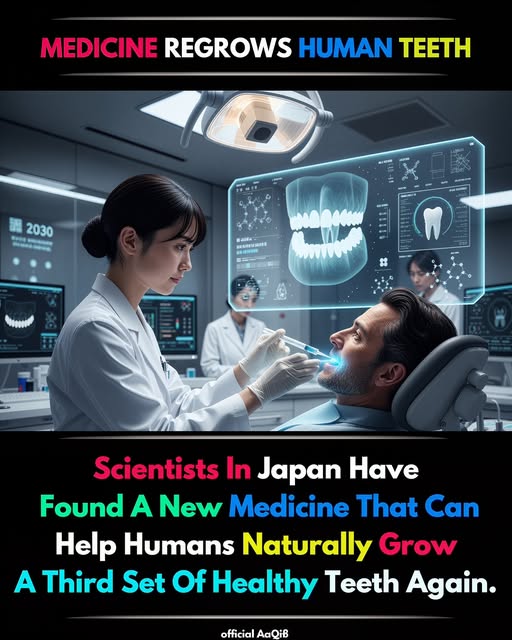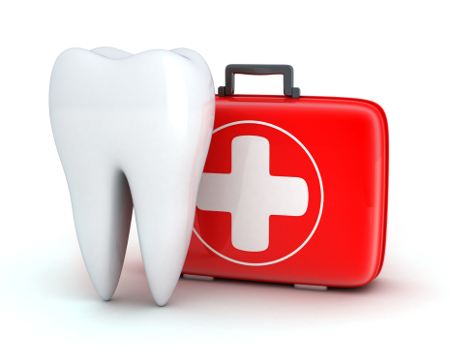Missing Teeth? Find Your Smile Again.
New Tooth Regrowth Drug from Japan: When Will It Arrive in the Philippines?
Language :

Topics:
A New Dawn for Dentistry: The End of False Teeth is Near?
For millions, a lost tooth is a permanent sentence. The options—dentures that slip, bridges that affect neighboring teeth, or costly implants—have been the standard for decades. But what if we could simply... grow a new one?
A groundbreaking discovery from Japan is turning this sci-fi dream into a tangible reality, promising to revolutionize dental care as we know it.
The Breakthrough: Awakening Your Body's Hidden Smile
Scientists in Japan are pioneering a revolutionary drug that targets a specific gene, USAG-1. By blocking this gene's protein, the drug activates the body's innate ability to grow new teeth. Essentially, it signals "hidden" tooth buds—the same foundational cells that created our baby and adult teeth—to spring into action and form a completely new, natural tooth in the gap.
This isn't just a repair; it's a true regeneration. If human trials succeed, this treatment could one day make dentures and implants obsolete, allowing people to restore their genuine, natural smile.
From Lab to Local Clinic: How Long Until It Reaches the Philippines?
The burning question for many is: "How many years will it take for this to arrive in the Philippines?"
Realistically, we are looking at a 10 to 15-year timeline, if not longer. Here’s why:
-
Clinical Trials: The drug is currently in the trial phase. It must pass through rigorous human trials (Phase I, II, and III) to prove it is both safe and effective. This process alone can take 5-10 years.
-
Regulatory Approval: After successful trials, it needs approval from regulatory bodies like the FDA in the US or the PMDA in Japan. The Philippines' own Food and Drug Administration (FDA) would then need to review and approve it for local use, adding more time.
-
Infrastructure and Cost: This will be a highly specialized, cutting-edge treatment. Its initial rollout will be in major global research hospitals. For it to become accessible in the Philippines, significant investment in training, technology, and infrastructure is needed, which will influence its cost and availability.
While it's a future prospect, it signals a massive shift that the dental community should prepare for.
Philippine Dentistry: Innovating or Holding the Line?
This leads to a critical self-reflection for the Philippine dental industry: Does our technology innovate, or do we just hold the traditional method?
The answer is a tale of two cities.
An Analysis of Dental Equipment in the Philippines:
-
The Urban Centers: In major cities like Manila, Cebu, and Davao, you will find state-of-the-art dental clinics that rival any in the world. These practices are equipped with:
-
Digital & 3D Imaging: CBCT scanners provide 3D views of the jaw and teeth.
-
CAD/CAM Technology: For designing and milling crowns, veneers, and bridges in a single visit.
-
Digital Smile Design: Using software to plan and preview a patient's new smile.
-
Laser Dentistry: For more precise and less painful procedures.
-
-
The Rural and Provincial Areas: Here, the story is different. Many clinics still rely heavily on:
-
Traditional analog X-rays.
-
Manual impression kits using putty.
-
Older model drills and equipment.
-
A focus on extractions and basic restorative work due to cost constraints.
-
This creates a significant technology gap. The industry is innovating at the top, but the baseline standard of care for the average Filipino is still catching up.
The Clear Advantage of Embracing Innovation
Why is it so crucial to close this gap? The advantages are profound.
-
For the Patient:
-
Precision and Predictability: Digital tools lead to better-fitting restorations and more predictable outcomes.
-
Comfort: Techniques like laser dentistry and digital impressions are faster and more comfortable.
-
Less Invasive: Modern methods often preserve more of the natural tooth structure.
-
Empowerment: Tools like intra-oral cameras allow patients to see what the dentist sees, fostering trust.
-
-
For the Dentist:
-
Efficiency: Streamlined workflows mean seeing more patients and reducing human error.
-
Enhanced Capabilities: Allows for offering complex procedures that were previously outsourced.
-
Competitive Edge: A modern practice attracts informed patients.
-
The High Cost of Stagnation: Disadvantages of Old Technology
Holding onto outdated technology isn't just about nostalgia; it has real drawbacks.
-
Inaccuracy: Traditional impressions can distort, leading to ill-fitting crowns or dentures that require multiple adjustments.
-
Patient Anxiety: The sound and vibration of older drills, along with the discomfort of putty impressions, contribute to dental phobia.
-
Limited Diagnostics: Without digital X-rays or 3D imaging, complex issues like microfractures or precise implant placement can be missed or more challenging.
-
Inefficiency: Manual processes take longer, increasing chair time for patients and reducing the number of patients a dentist can see.
The Future is a Hybrid
The Japanese tooth-regrowing drug is the vanguard of a new era. While it's on the horizon, the Philippine dental industry must not wait. The path forward is a hybrid model—embracing digital innovation today to improve standards of care across the board, while preparing for the biological breakthroughs of tomorrow.
By investing in modern equipment and continuous education, Filipino dentists can ensure they are not left behind. They can offer the best of today's technology while getting ready to offer the miracles of tomorrow, ensuring that every Filipino can have a reason to smile—truly, fully, and naturally.




